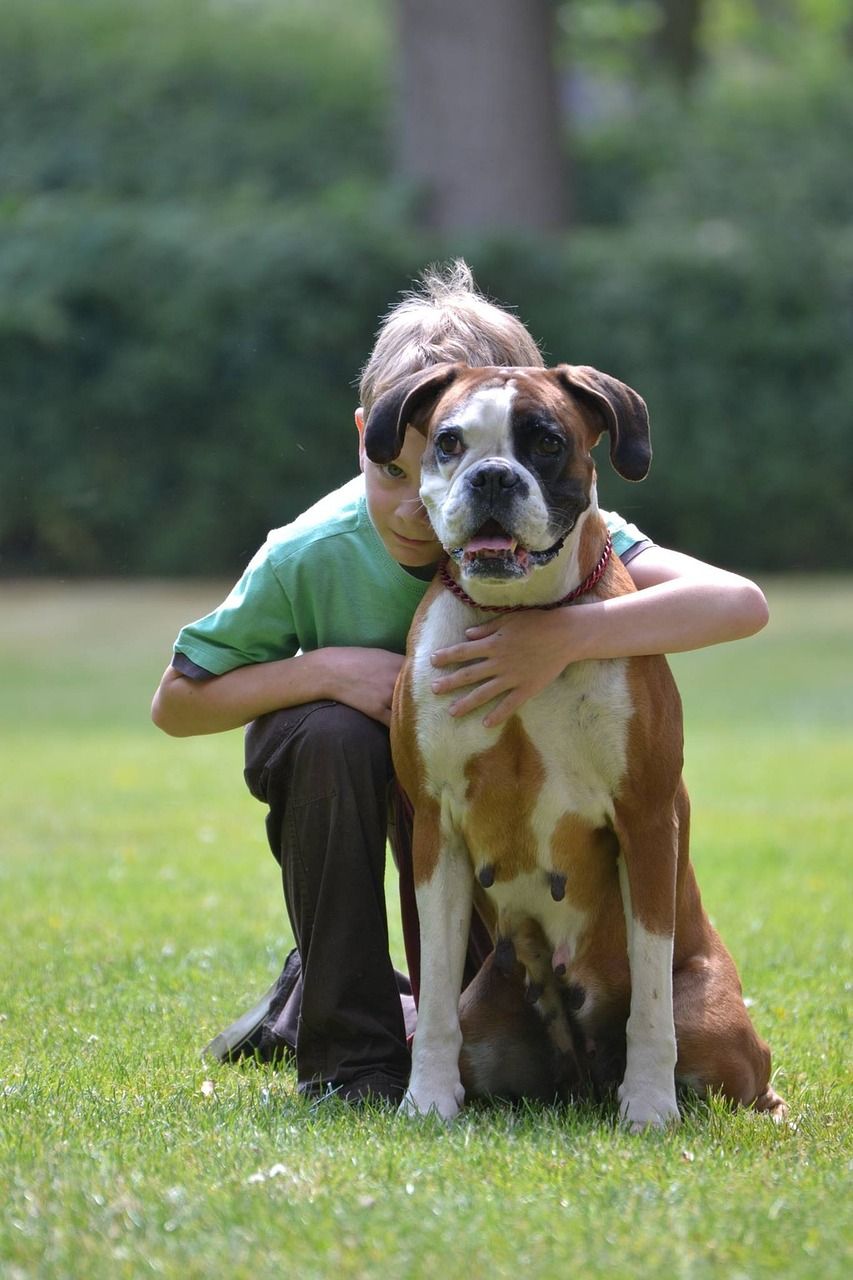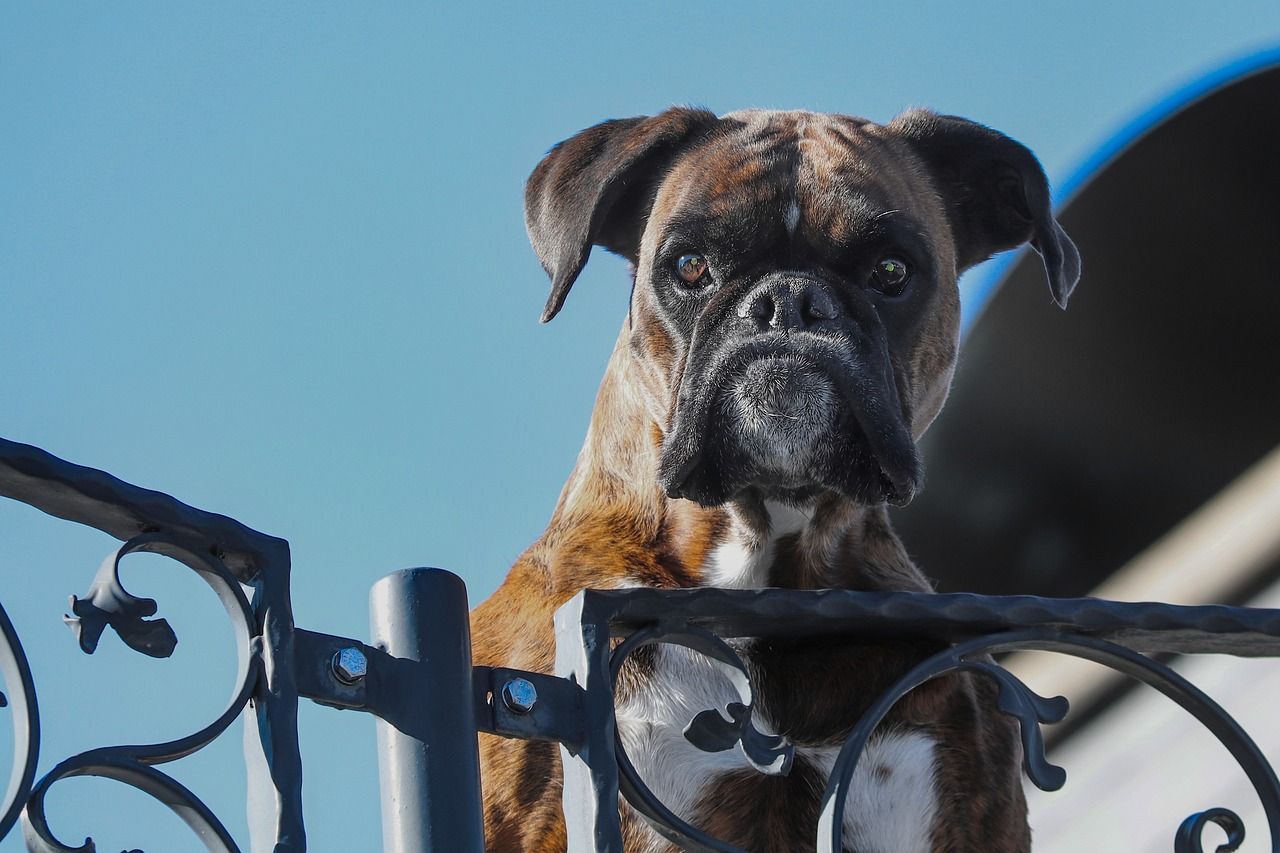Embarking on the journey to decipher the mystery surrounding Vizslas and their trainability leads us through a maze of history, traits, and dog training methodologies. But let's cut to the chase: Are Vizslas truly easy to train?

Delving into the Origins: The Hungarian Vizsla
While we often marvel at the Vizsla's sleek coat and keen eyes, their roots can be traced back to Hungary. Specifically bred for hunting, these dogs have finely tuned instincts regarding agility and intelligence. But beyond the fields and forests, they can forge deep connections with humans that have secured their place in our homes.
Understanding Vizsla Behavior: A Two-Sided Coin
When one thinks of Vizslas, words like "affectionate," "gentle," and "devoted" come to mind. Their innate desire to bond and please their human companions isn't just endearing; it's also a signpost of their potential trainability. Those expressive eyes are not just seeking treats but are also eagerly awaiting guidance and tasks.
However, just as with any coin, there's another side to consider. Vizslas are brimming with energy and can exhibit a certain degree of stubbornness. While their intelligence is often a plus in training, they also require consistent mental engagement to prevent restlessness.
Unpacking Training Challenges with Vizslas
Their desire to please can be a double-edged sword. While it facilitates responsiveness during training, Vizsla's innate energy can occasionally be a hurdle. It's not just about teaching them tricks or commands; it's about channeling their vigor constructively. A bored Vizsla might just turn your garden into their personal excavation site!
Effective Training Approaches for Vizslas
Beginning the training regimen while still puppies can set the stage for success. Young Vizslas, with their zest for life and curiosity, are incredibly receptive.
Consider the following training cornerstones:
- Prioritizing positive reinforcement techniques
- Upholding consistency in both commands and rewards
- Ensuring they socialize, helping them navigate various environments
- Utilizing crate training for better house manners
Ensuring Older Vizslas Don't Miss Out
For those who've brought an older Vizsla into their lives or perhaps skipped the early training phase, all hope is not lost. Despite age-old sayings, Vizslas in their prime can still grasp new commands. The keys? Adaptability, consistency, and tailor-made techniques that cater to mature dogs.
Comparing Vizsla Trainability to Other Breeds
Every dog breed boasts a set of intrinsic traits. In the vast spectrum of trainability, Vizslas occupy a commendable position. For instance, while Vizslas and Siberian Huskies are both intelligent and energetic, Vizslas often display a greater willingness to cooperate during training. Meanwhile, breeds like Labrador Retrievers, somewhat akin to Vizslas in disposition, often mirror their training responsiveness.
Beyond Basics: Advanced Training for Vizslas
Having established the core tenets of Vizsla training, it's time to explore the realms of advanced training. This involves honing their skills beyond the usual sit, stay, and fetch.
Specialized Training Techniques for Vizslas
Agility and Sports Training
Given the Vizsla's athletic build and historical background as a hunting dog, agility training can be a natural fit. Setting up obstacle courses, incorporating jumps, tunnels, and weave poles can be an exciting challenge for them. Not only does this offer a physical outlet, but it also stimulates their mind, ensuring a balanced mental and physical workout.
Obedience and Behavioral Training
While basic obedience is essential, taking Vizslas to the next level where they can follow complex command chains or even display self-control in distraction-rich environments showcases their true potential. Techniques like distance commands, where the dog obeys even without being close to the trainer, can be integrated.
Therapy and Service Training
Due to their gentle nature and strong bond with humans, Vizslas can be trained for therapy or as emotional support animals. While this demands rigorous training and a deep understanding of human emotions, Vizslas have the potential to excel in such roles, providing comfort and assistance to those in need.
Training Tools and Resources for Vizslas
With evolving training techniques, several tools have emerged that can aid the process. Harnesses that distribute pressure evenly, clickers for precise timing during positive reinforcement, and interactive toys that challenge their intelligence can be invaluable. Moreover, there are countless books, online courses, and even mobile apps tailored specifically for Vizsla training.
The Importance of Consistent Reinforcement
As with any training, it's crucial to remember that consistency is king. Vizslas, despite their intelligence, thrive on routine and repetition. Even if short, regular training sessions can be more effective than sporadic, longer ones. Also, revisiting commands and tricks they've mastered helps cement those behaviours.
Navigating Common Myths about Vizsla Training
In the vast dog training world, various myths and misconceptions find their way into popular discourse. Regarding Vizslas, it's essential to differentiate fact from fiction to ensure effective training.
Debunking Vizsla Training Myths
Myth 1: Vizslas are too Energetic to be Trained
While it's undeniable that Vizslas are energetic, this doesn't mean they're untrainable. On the contrary, their energy can be channeled into productive training sessions. The key lies in incorporating activities that burn their excess energy before delving into focused training.
Myth 2: They Require Harsh Discipline to be Controlled
Vizslas, with their sensitive nature, respond far better to positive reinforcement than to negative techniques. Harsh discipline can lead to fear, anxiety, and even aggressive tendencies. Building trust and offering rewards for desired behaviors is a more effective and humane approach.
Myth 3: Vizslas are Pure Hunting Dogs and Don't Fit in Urban Settings
While their hunting heritage is strong, Vizslas have adapted well to urban living. With adequate exercise and mental stimulation, they can thrive even without sprawling fields and forests.

Customizing Training for Individual Vizslas
Every Vizsla is unique. While there are general traits and behaviors characteristic of the breed, it's essential to remember that each dog will have its personality, quirks, and preferences.
Understanding Your Vizsla's Personality
Some Vizslas may be outgoing and social, while others might be more reserved. Recognizing these traits can guide the training process. For instance, a more timid Vizsla might benefit from gradual socialization, while an extrovert might excel in group training sessions.
Setting Realistic Expectations
Understanding that perfection is a journey and not a destination is crucial. There might be days when your Vizsla excels in training and other days when they seem distracted. Celebrate the small victories and understand that setbacks are a part of the process.
The Role of the Trainer: You!
Often, training is as much about the owner as it is about the dog. Your attitude, patience, and consistency play pivotal roles in shaping your Vizsla's behavior.
Building a Bond
A strong bond between you and your Vizsla will make the training process smoother. Spend quality time with your dog, engage in play, and ensure that they associate you with positive experiences.
Continuous Learning
Just as your Vizsla is always learning, so should you. Stay updated with the latest training techniques, attend workshops, and be open to feedback. This ensures that you're always offering the best guidance to your furry friend.
Vizsla Training: Nurturing a Balanced Lifestyle
The training journey, while comprehensive, is just one aspect of a Vizsla's life. To truly understand their behavior, one must look beyond the commands and drills, diving into their daily routines, habits, and needs.
Diet and Nutrition: Fueling Their Learning
Every trainer will acknowledge that a dog's diet significantly affects their receptiveness to training. A Vizsla's high energy and active lifestyle demand a nutritionally balanced diet.
Protein-Packed Meals
Given their hunting lineage, Vizslas benefit from a protein-rich diet. Whether you choose commercial dog food or a homemade meal plan, ensure it has ample protein sources like chicken, fish, or beef.
Avoiding Fillers
Cheap dog foods often contain fillers like corn, wheat, and soy. While these might make your dog feel full, they don't provide the necessary nutrients. It's advisable to opt for premium dog foods that prioritize genuine, wholesome ingredients.
Hydration is Key
Vizslas, especially when undergoing training, need to be well-hydrated. Always ensure your dog has access to clean, fresh water.

Exercise: More Than Just Physical Activity
Physical exercise for Vizslas isn't just about keeping them fit; it's also about mental stimulation. These dogs thrive when their minds and bodies are engaged.
Regular Walks and Play Sessions
Even if you have a backyard, Vizslas benefit from regular walks. It gives them a chance to explore, meet other dogs, and adapt to different environments. Incorporate toys like frisbees or balls to make play sessions more interactive.
Mental Games and Puzzles
Interactive toys, scent games, or hide-and-seek activities stimulate a Vizsla's mind, making them sharper and more focused during training sessions.
Health Check-ups: Keeping Them in Prime Condition
Routine vet visits are crucial, not just for vaccinations but also to monitor their overall health. A healthy Vizsla is more likely to be responsive during training.
Socializing: Creating Well-Rounded Canines
Vizslas, with their affectionate nature, benefit immensely from socialization. Regular interactions with other dogs and humans can mold them into well-rounded, confident pets.
Puppy Socialization Classes
If you have a Vizsla puppy, consider enrolling them in puppy socialization classes. It provides a controlled environment where they can interact with other dogs and learn essential social cues.
Positive Encounters
Always ensure that your Vizsla's interactions, especially during their formative months, are positive. Negative experiences can lead to long-term behavioral issues.
The Emotional World of Vizslas: Understanding Their Inner Workings
To ensure a successful training journey and a harmonious living relationship with your Vizsla, it's vital to tap into their emotional world. Recognizing and catering to their emotional needs can make a world of difference.
Sensitivity: The Vizsla's Heartbeat
Vizslas are often described as "Velcro dogs" because of their tendency to form deep attachments to their human companions. This characteristic sensitivity needs to be understood and appreciated.
The Importance of Affection
Vizslas thrive on love and attention. Regular cuddle sessions, words of praise, and even just spending time together can boost their emotional well-being.
Dealing with Separation Anxiety
Due to their clingy nature, Vizslas can suffer from separation anxiety. Creating a routine, offering distractions when you're away, and gradual training can help mitigate this.
Communication: Reading Between the Lines
Like all dogs, Vizslas have a language of their own. Tapping into this can offer insights into their emotional state.
Understanding Vocalizations
From barks to whines, each vocalization can convey a different message. A playful bark is different from a distressed one, and understanding these nuances can aid in addressing their needs.
Body Language is Key
Tail wagging, ear positioning, and even their gait can provide clues about their emotional state. A relaxed Vizsla will move fluidly, while a stressed one might showcase stiffness.
Environmental Influences: Shaping Their Emotional Landscape
The environment in which a Vizsla grows and lives plays a pivotal role in their emotional development.
A Stable Home Environment
Ensuring a stable environment, devoid of frequent disruptions, can help a Vizsla feel secure and loved.
Addressing Negative Experiences
If a Vizsla has faced trauma or negative experiences, especially during their formative years, it's essential to address these with patience. Behavioral therapy, positive reinforcements, and consistent love can help them overcome past traumas.

Emotional Enrichment: Beyond Physical Needs
While physical activity and training are essential, emotional enrichment completes the puzzle.
Interactive Play
Toys that demand interaction, be it tug toys or toys that respond to their actions, can offer emotional satisfaction.
Training with Empathy
Integrating empathy into training sessions ensures that while you're teaching commands, you're also building trust. Recognize their efforts, appreciate their successes, and offer comfort during challenging tasks.
Conclusion:
In our journey exploring Vizsla training, we've unearthed the breed's unique blend of intelligence, sensitivity, and athleticism. Training these "Velcro dogs" goes beyond mere commands; it demands an understanding of their emotional landscape, their physical and dietary needs, and the nuances of their communication.
By integrating modern training techniques, offering a balanced diet, and ensuring consistent emotional enrichment, Vizsla owners can forge a bond rooted in mutual respect and understanding. Embracing a holistic approach—combining physical, mental, and emotional facets—yields not just a well-trained Vizsla, but a harmonious, enriching companionship for both dog and owner.
Frequently Asked Questions (FAQs):
1. Are Vizslas easy to train compared to other breeds?
Vizslas are intelligent and eager to please, making them relatively easier to train. Their responsiveness to positive reinforcement and keen ability to understand commands sets them apart. However, their energetic nature requires consistent, engaging training methods.
2. What's the best training approach for Vizslas?
The best approach for Vizslas involves positive reinforcement, understanding their emotional needs, and incorporating regular physical and mental stimulation. Being consistent and patient further ensures successful training outcomes.
3. How do I address my Vizsla's high energy levels during training?
Channel their energy into productive sessions by incorporating activities that burn excess energy. Engage them in regular walks, play sessions, and mentally stimulating games to keep them focused during training.
4. Can Vizslas adapt to urban living despite their hunting background?
Yes, Vizslas have adapted well to urban settings. With appropriate exercise, mental stimulation, and training, they can thrive even in city environments.
5. What kind of diet is best for a Vizsla during training?
A nutritionally balanced diet, rich in proteins from sources like chicken, fish, or beef, is ideal. Avoiding fillers and ensuring adequate hydration boosts their responsiveness during training.




